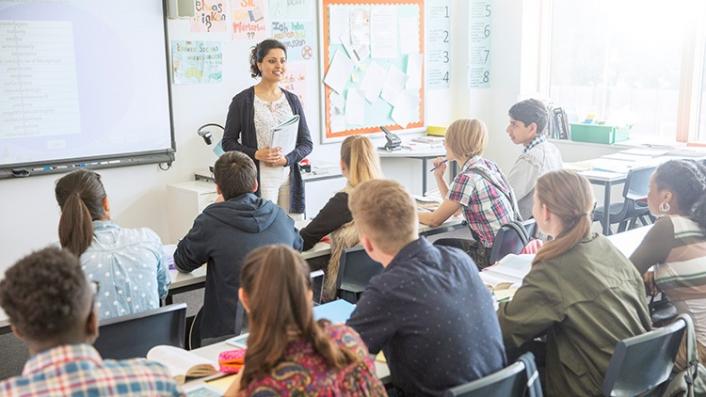Celebrating Our New Lead Schools for Music Education in Cheshire West and Wirral
On Thursday, 26th June, Edsential proudly welcomed six schools from...30 Jun 2025

Can teachers be fully autonomous? If not, how can they be truly creative in their lessons?
With around one-third of teachers leaving the classroom within five years of qualifying, it is time to ask: what do we expect of our teachers?
Should we, for example, expect teachers in a particular subject to all “deliver” the same highly polished PowerPoint presentation devised by a senior colleague?
Or should each teacher be given the overview of the content that needs to be covered, and asked to respond in their own way to ensure that the necessary learning takes place?
Is it de-professionalising to expect teachers, particularly those with a few years’ experience, to follow very detailed centrally produced lesson plans?
Or is the only way to make teaching manageable given the financial constraints on schools and growing workload pressures?
Is the pressure to get through the increased amount of content at both primary and GCSE reducing the opportunities to explore in more details concept and ideas that spark the interest of pupils or teachers?
All of these questions need answers. And, last month, RSA academies sought to answer them. We gathered a group from across education (teachers, policymakers, union representatives, the College of Teaching), to explore whether, where and how greater teacher autonomy and creativity might improve teacher job satisfaction, motivation, and ultimately retention.
This is what we found:
1. High-level schemes of work need to be agreed at the school level, and that the scope for greater creativity lies at the individual lesson level. As one headteacher put it: “The ‘what’ is agreed at school level, the ‘how’ is to be determined by the teacher.”
2. Schools’ practice in this area is variable and evolving. Some schools to deliver lessons through a series of high-quality PowerPoint presentations. Others, leaders allow the teachers to decide how they teach. Neither of these things are static. The schools who use PowerPoint presentations are looking to see how they can give teachers more agency without losing quality. And those who give teachers free reign have concerns about NQTs’ skills and expertise. There was a sense that the scope for autonomy was greater at primary, where one teacher is with their class for the majority of the time, than in secondary schools. It’s all about balance.
3. The terms ‘creativity’ and ‘creative teachers’ are problematic – they mean different things to different people. Some assume that ‘creativity’ is something that only happens in the arts, and the term alone can alienate those who see themselves as ‘traditional teachers’. When we speak about having the opportunity to be ‘creative’ often we mean that teachers should be able to act autonomously, take decisions and change plans in response to what was happening in the classroom, to be professional.
4. Benefits for teachers of having greater scope for creativity are largely connected to their professional identity as teachers and a sense of self-worth. A sense of intellectual engagement and satisfaction with teaching allows the application of professional judgement, and provides opportunities for deeper and more meaningful engagement with the children in the class. The benefits to pupils mirror those for the teachers: by responding flexibility to the children in front of them the “creative teacher” is able to tailor learning to the children’s interests and questions, making learning more engaging. Seeing these approaches modeled by adults can support the development of children’s creativity, and help build skills for the world beyond school which is often less structured than the school environment.
5. Giving teachers greater autonomy is not without risks. Consistently used lesson plans are seen as an insurance policy that ensures a certain minimum standard. To work effectively, schools need to have really secure behaviour management policies. There’s also the risk that greater creativity and responsiveness to children means that needs of only the louder, more confident children are prioritised over other less secure learners.
6. The debate about teacher creativity and autonomy cannot be seen in isolation from the wider education context. The increased content at key stage 2 and in the new GCSEs, combined with the unforgiving accountability framework, places enormous pressure on staff at all levels to get through the content. Meanwhile, the squeeze on school funding and increased reliance by many schools on newly qualified or unqualified teachers is likely to encourage greater use of centrally prescribed resources to support these inexperienced staff and support consistency. Yet the teacher shortage also provides the opportunity, arguably the imperative, to rethink our approach to teachers and teaching. Whilst a heavily prescribed approach and even scripted lessons can provide a short-term stop-gap, if we are to secure the high standards in our schools that everyone aspires to that means we need to do more to retain more of the thousands of teachers who leave each year after 3-5 years in the classroom. And that means building and developing teaching as a profession, not de-professionalising it.
Taken from: https://www.tes.com/news/who-should-decide-how-teachers-teach